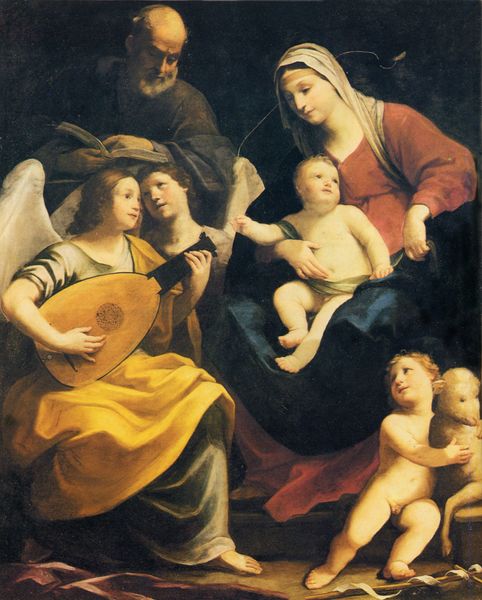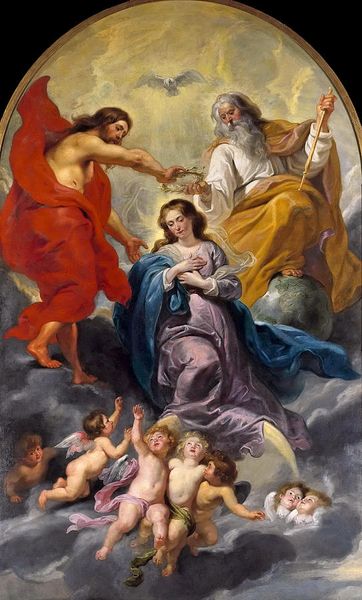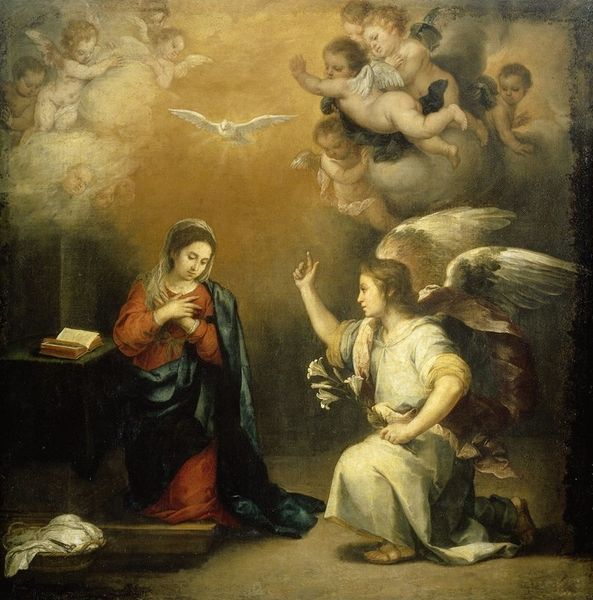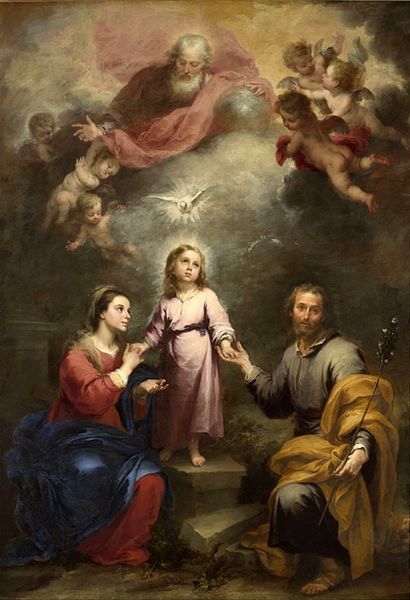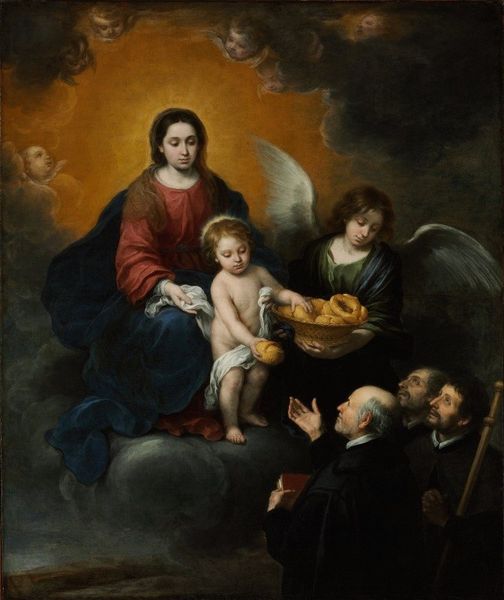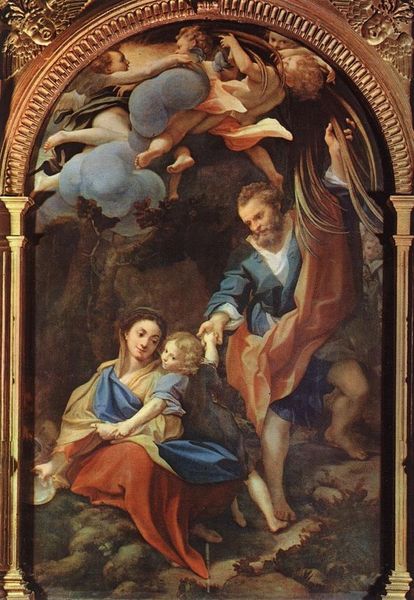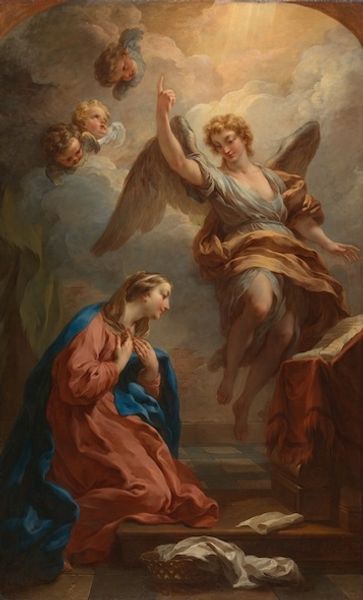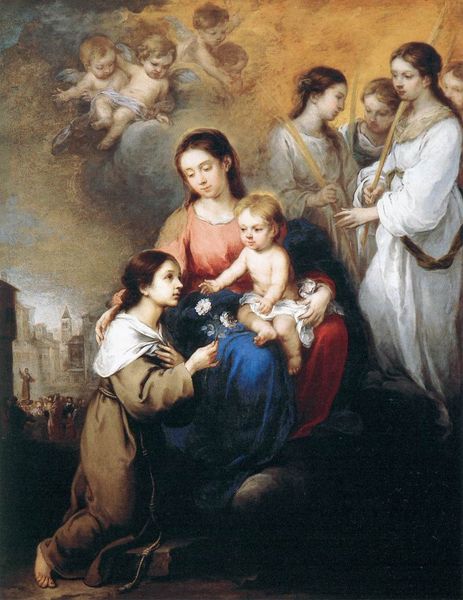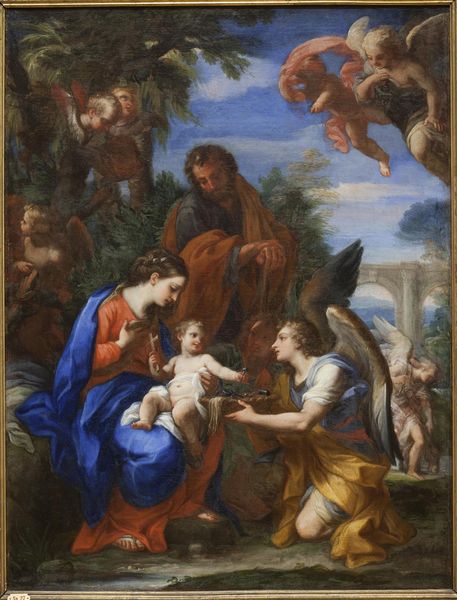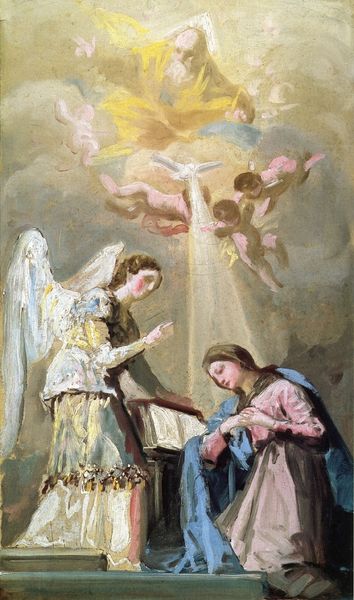
painting, oil-paint
#
portrait
#
allegory
#
baroque
#
fantasy art
#
painting
#
oil-paint
#
figuration
#
underpainting
#
history-painting
Copyright: Public Domain: Artvee
Editor: Here we have Anthony van Dyck’s “Virgin and Child with Music-Making Angels,” from around 1630, done with oil paint. It’s beautiful, and the texture looks so soft. I’m especially drawn to the instruments they're playing – the lute and what looks like a violin. What stands out to you in this work? Curator: I see the value of Van Dyck’s artistry in the meticulous rendering of materials: the rich pigments of the paint itself, how it captures the sheen on the lute, the drapery’s luxurious folds, and the implied labor in acquiring and preparing these substances. How do these details contribute to the painting's overall message? Editor: I hadn't thought about the paint itself so much. Does the expense of those materials tell us something about the patronage or intended audience for this piece? Curator: Exactly. Consider the global trade networks required to source pigments like ultramarine, derived from lapis lazuli. The painting becomes evidence of a complex economic and social web. Does acknowledging these considerations shift your understanding of its original function? Editor: Absolutely, thinking about where the materials came from and who could afford this kind of painting gives me a different view than just admiring it for its beauty. It connects it to the world. Curator: Indeed, it bridges the sacred with the very material conditions of its creation, highlighting the intricate relationship between artistic production and its socio-economic context. Now you know what's essential for the artwork’s cultural narrative. Editor: I'll never look at a painting the same way again. I will look beyond the face of an artwork!
Comments
No comments
Be the first to comment and join the conversation on the ultimate creative platform.

